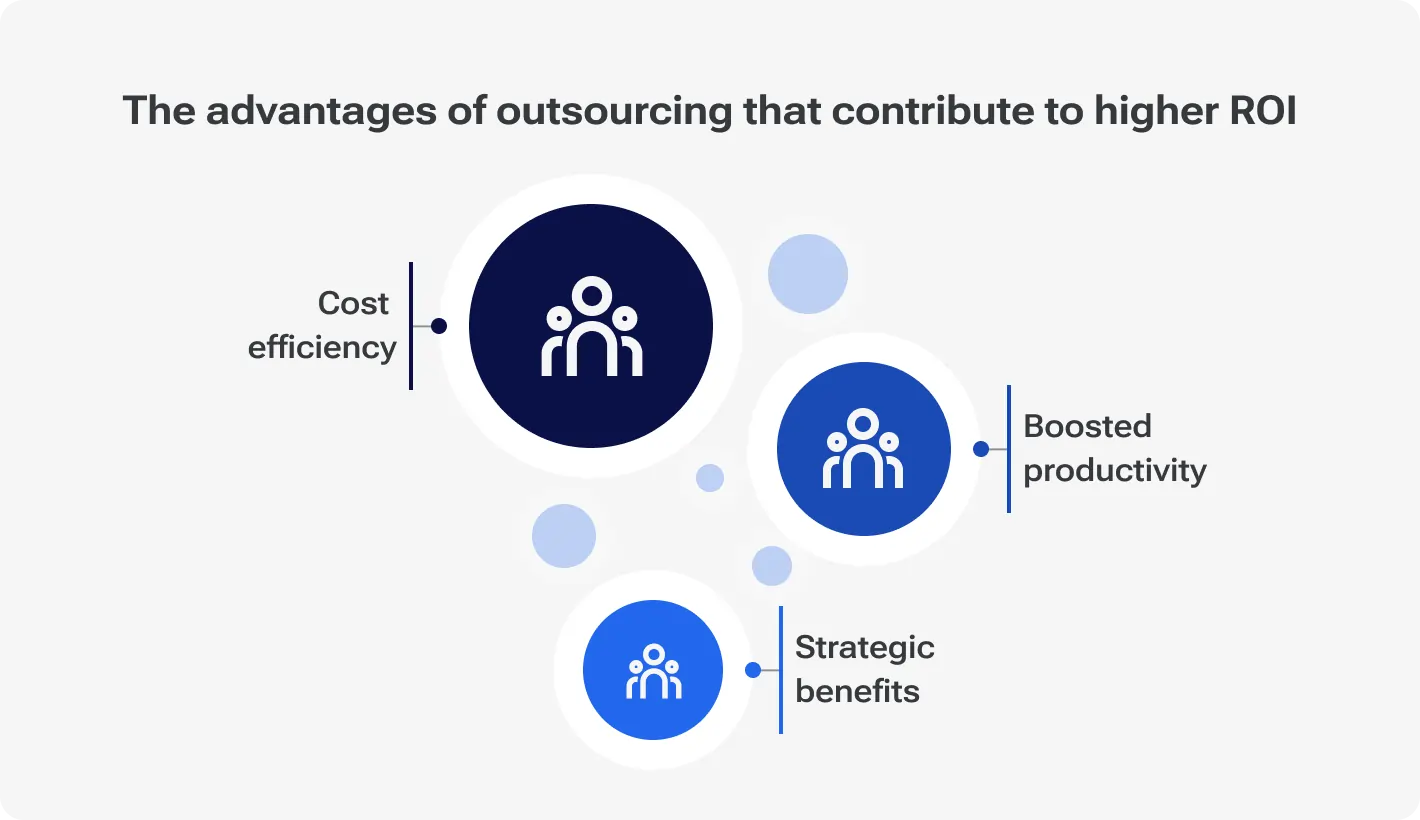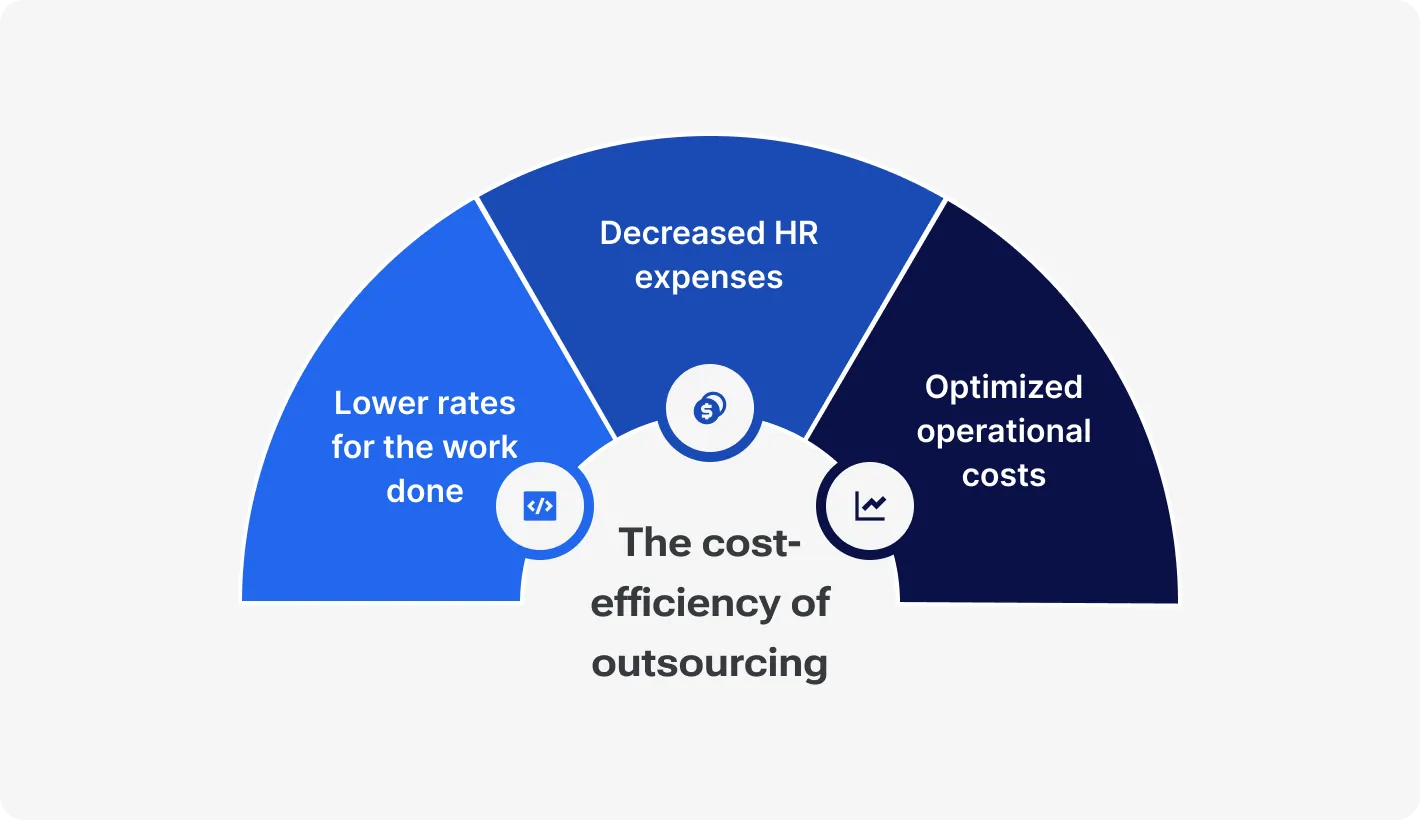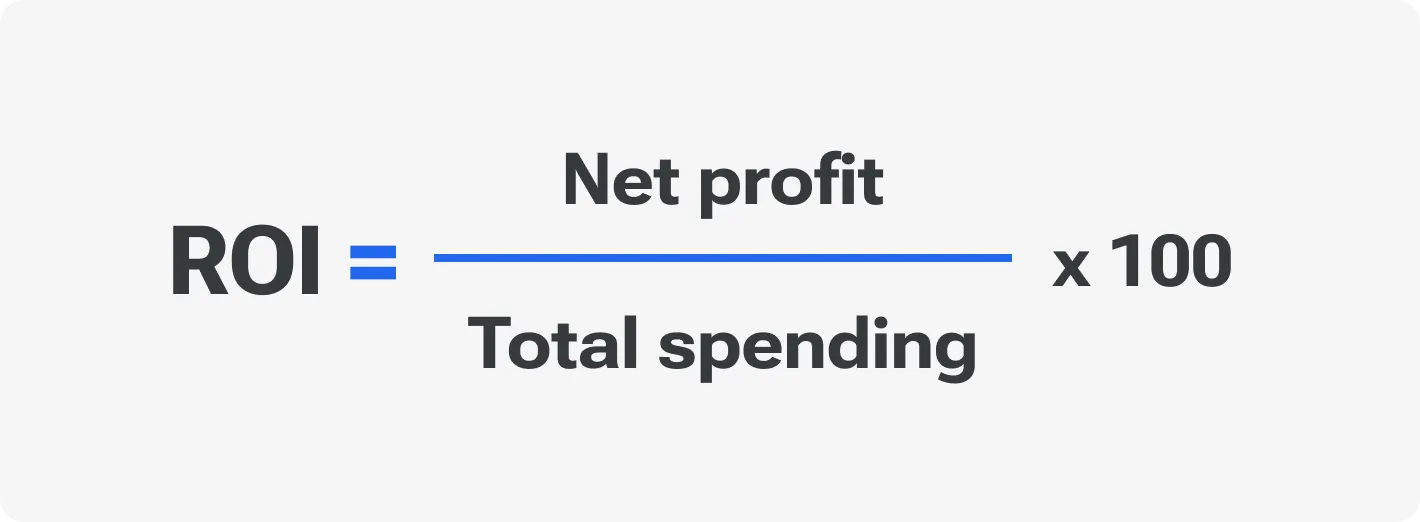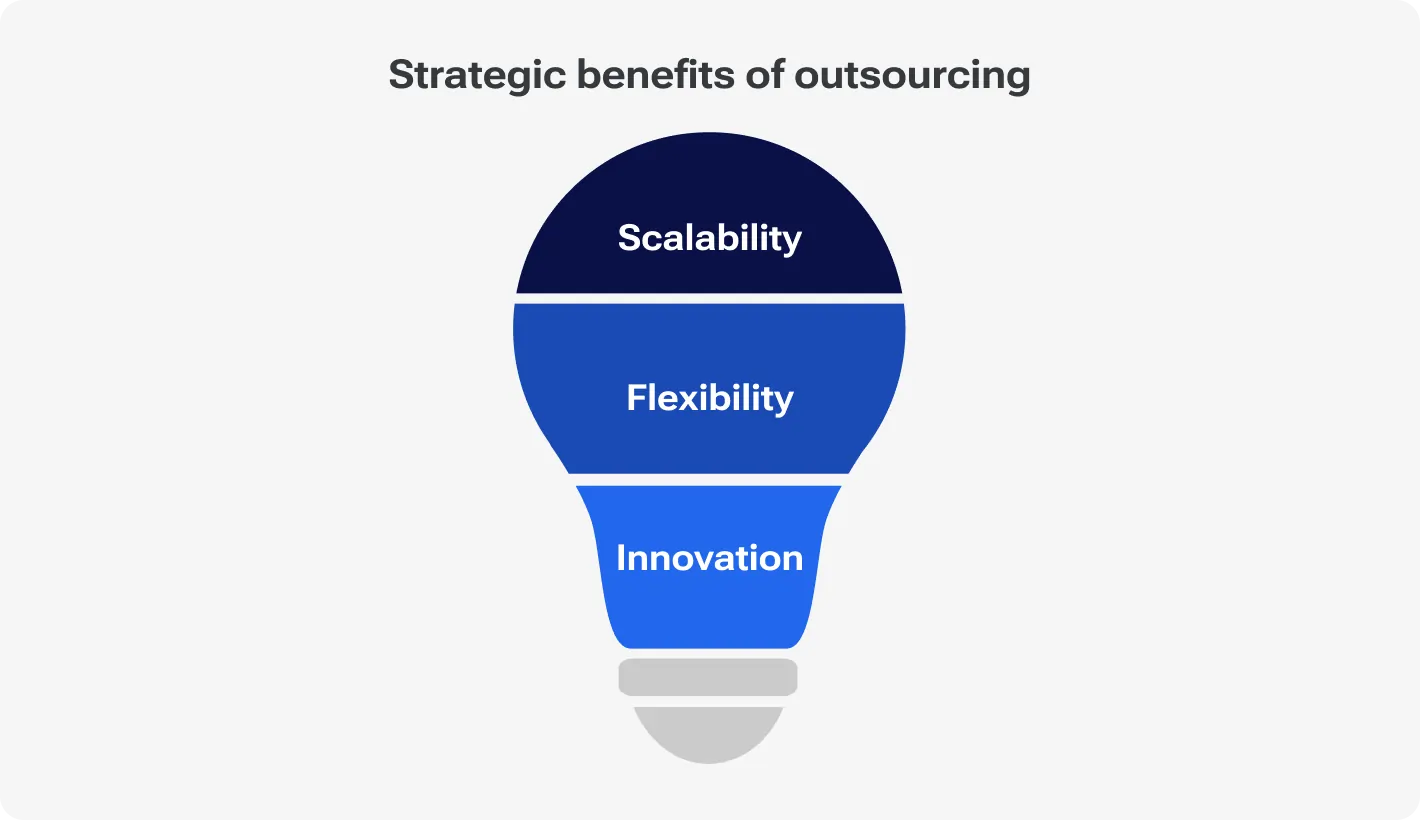Outsourcing to Czechia

How much does it cost to hire developers in Czechia?
Dec 2nd 25 - by Devico Team
Find out how much it costs to hire software developers in Czechia in 2025. Compare hourly rates, roles, and factors that impact pricing.
Hire
Hire by role
Hire Front-end developers
Hire Back-end developers
Hire Full-stack developers
Hire Android developers
Hire iOS developers
Hire Mobile developers
Hire AI engineers
Hire ML engineers
Hire Automation QA engineers
Hire Blockchain developers
Hire Data engineers
Hire Cloud engineers
Hire by skill
Hire JavaScript developers
Hire TypeScript developers
Hire Ruby on Rails developers
Hire React Native developers
Hire Flutter developers
Hire Golang developers
Hire React.js developers
Hire Python developers
Hire PHP developers
Hire .NET developers
Hire Java developers
Hire Laravel developers

Outsourcing
December 03, 2024 - by Devico Team
Summarize with:
Businesses can save up to 85% of their budget by partnering with IT contractors. But these are just the figures based on research and surveys. Will this format be profitable, namely for your company? Business analysts can predict the possible benefits, but the real revenue can be measured only after trying.
To understand whether it was the right decision to assign IT tasks to external specialists, it is crucial to measure the ROI of outsourcing. How to do this? You can find the comprehensive answer to this question from this article.
Basically, ROI (return on investment) is the rate of money earned in relation to the budget spent. It is calculated by dividing all net income by all expenses and multiplying by 100%.
However, sometimes ROI is not so easy to evaluate, for example, in the case of outsourcing. This work model has both direct and indirect advantages, and factoring them into outsourcing ROI calculations ensures a realistic view of performance.
It's worth considering more than just obvious revenues and expenses when evaluating whether this operation model is beneficial to you. You also need to keep in mind the extra privileges this solution offers. Here are 3 elements to pay attention to.

When calculating the ROI of IT outsourcing, it is possible to take into account not only income but also money saved. Outsourcing gives an opportunity to significantly reduce the IT budget by getting the following advantages.
When you choose outsourcing, you can select which country you want to hire specialists from. The rates of specialists from Eastern Europe and Asia are much lower than the cost of services of professionals from the USA or Western Europe.
For example, the mean hourly rate of a senior software developer from the USA is $68 and can reach up to $100 in case of some specific expertise. Meanwhile, a Ukrainian specialist of this range charges an average of $27 per hour with a median monthly salary being $4700. Of course, the price may also depend on experience, expertise in rare technologies, as well as the complexity of the ordered tasks.
By working with external specialists, you don't have to spend your budget on:
talent acquisition;
hiring new in-house team members;
onboarding them.
Often, outsourcing companies, having a team of professionals with diverse skills, can select employees with maximum experience in the tasks you need for your project. This makes it possible to complete the work faster, and, accordingly, cheaper if you pay by hour.
Moreover, when cooperating with contractors, you pay only for the result, which directly improves the ROI of IT outsourcing by eliminating fixed overhead costs. Unlike gathering and retaining an in-house team, you don't have to constantly allocate a budget for stable salaries, vacations, health insurance, bonuses, and so on.

Outsourcing IT companies often have a team of specialists with diverse skills and expertise. Some of them may be proficient at performing specifically the tasks needed for your project. So, they know how to handle them as quickly as possible. If you pay by hour, getting more work done in the same amount of time allows you to save significantly and get more profit.
In addition, outsourcing allows you to shorten time-to-market, on average by 25%, as the statistics by McKinsey state. So by releasing a product faster, your business will start generating revenue earlier. If you were to use other, slower work models, this would result in lost profits, because in business, time is money. This also needs to be considered when calculating the outsourcing ROI, since faster time-to-market directly improves profitability and helps you measure outsourcing success more accurately.
Keep these strategic advantages in mind when you measure outsourcing success, because qualitative benefits often impact the long-term ROI of outsourcing more than immediate cost savings. This pattern of work offers the following advantages.
It can be extremely difficult to find in-house specialists in a specific field, such as blockchain or cybersecurity. This can take months of time and thousands of dollars of budget. By choosing to outsource, you can immediately access specialized knowledge and pay only for the amount of work done with no additional costs.
External specialists can breathe new life into your business. With their unique knowledge and experience, they can take a fresh look at your projects and come up with innovative ideas.
Furthermore, to stay competitive, outsourced IT teams often use cutting-edge technologies to optimize and automate their workflows. This allows them to be even more productive.
Also, many companies offer digital transformation as one of their services. This can help to innovate and revitalize any business, and should be factored in when you measure outsourcing success beyond financial results.
Outsourcing gives you unique flexibility, which is often reflected in higher outsourcing ROI for companies needing rapid scaling. With this work model, you can easily scale your project both up and down.
As for the first option, you don’t need to find, hire, and onboard new in-house team members, wasting time and budget on this. All you need to do is just to order more services and engage more external specialists in your project.
As for the second option, you don’t have to cut internal staff, putting your company’s reputation on the job market at risk. You can just reduce the amount of ordered IT services or temporarily abandon them if you do not need them in a particular period of time.
Are you still hesitating about whether to turn to external specialists and want to calculate if it will be beneficial for you? Or do you already work with contractors and want to understand whether you really benefit from it? You can estimate the potential advantages or evaluate the success of your current collaboration using specific metrics. They will be discussed further in this article, including the most practical metrics for development outsourcing such as cycle time, deployment frequency, and bug rate.
To understand how beneficial the cooperation is from a financial point of view, you can use several indicators and ways of calculation. Let's consider them in detail.
The main indicator this article is devoted to is ROI (return on investment). It is not rocket science to calculate it. You just need to divide all net profit by the total spending you’ve made and multiply the result by 100%.

Total cost of ownership (TCO) is an advanced indicator that takes into account both direct and indirect expenditures. Figuring out this rate is also quite easy. This is the sum of all money spent on cooperation with IT partners.
But what exactly to include in calculations? Everything is clear with direct costs. This is the price of the services specified in the contract and paid. But what about indirect ones? These may be the budget needed for:
finding the right partner;
coordinating and managing the work of contractors;
maintaining the code developed by external specialists;
resolving the force majeure situations.
If you are only estimating the profitability of outsourcing before choosing this solution, pay special attention to the latest point from the list to evaluate the risks properly and plan your budget accordingly.
Once you have calculated this indicator, you can use it to figure out ROI. With the help of this, you can make sure that outsourcing is profitable, and an outsourcing ROI calculator can simplify the process by modeling different cost scenarios.
This is the process of evaluating whether something is really advantageous or not. To figure this out, you need to subtract the expenses from profits. The previous metric, TCO, is crucial for this.
To estimate profitability precisely, you need to take into account all possible expenditures and savings. This is one of the most practical ways to measure outsourcing success and validate the expected ROI of IT outsourcing. You need to count both direct and indirect expenses, described earlier in this article. Also, it is necessary to take into account all profits: both revenues and budget savings that became possible with ordering IT services from an external team.
Non-financial advantages and disadvantages can also be included in this analysis. In this case, not only the difference between income and expenditures will be considered but also the number of other benefits and drawbacks. If there are more pros, then the activity is beneficial. If the cons prevail, it is worth changing outsourcing contractors or the strategy of collaborating with them.
Non-financial benefits may include the following:
shortening time to market;
increasing the productivity and morale of an in-house team by freeing them from routine tasks;
the opportunity to fully focus on core business operations, etc.
One of the main signs of effective work is meeting SLA (service-level agreement). These are the scope of tasks, requirements, and quality standards specified in the contract. To ensure your IT partners comply with them, it is possible to assess the following KPIs:
Cycle time: the number of working hours/days it takes to complete a certain set of tasks.
Velocity: the scope of story points completed within a sprint.
Deployment frequency: the number of deployments to production within a specified period of time, reflects the agility of the development process.
Lead time for changes: the time it takes from initiating modifications until them being ready.
Mean time between failures: the uptime divided by the number of breakdowns.
Mean time to recover: the average time it takes to restore full functioning after failure, calculated by dividing the total downtime by the number of incidents.
Bug rate: the number of defects divided by the number of code lines.
Queue time: the average number of working hours/days from creating a ticket to starting the work on it.
Code churn: The ratio between the modified code lines to their total number.
Net promoter score: the indicator of customer satisfaction, is calculated by subtracting the number of detractors (people who ranked the services from 0 to 6) from the number of promoters (users who put 9 or 10 marks).
When choosing a work model, you also need to consider the future opportunities. Outsourcing can bring the following advantages in the long run:
Scalability. With external IT partners, it is possible to scale up or down without extra risks, as well as time, and budget spent.
Flexibility. Cooperating with contractors, you can easily and quickly adjust to market changes thanks to faster operation and better scalability.
Innovation. Outsourced professionals with diverse and unique skills and expertise can bring new ideas to your business.

When you have measured all the metrics, you can think about how it is possible to improve productivity and profitability. Here are a few tips for this.
The quality of the work results and, consequently, the amount of profit, directly depends on how clearly you define the expectations from collaboration. Before starting to cooperate with an external IT team, determine the goals of this as precisely as possible. The objectives should be:
Clear and detailed. Describe them as thoroughly as possible. Answer the following questions. What exactly do you want to achieve? For what? What skills and expertise are necessary for this? What tasks should be accomplished for this?
Measurable. Set the KPIs: certain rates you want to reach with the help of outsourcing. This will help you easily assess the success.
Time-bound. The goals should be limited in time. So, set the deadlines that your IT partners will be expected to meet.
Realistic. Take into account the current state of your business, the budget, and the market conditions while setting objectives.
Aligned with the overall business strategy. Think about how you can achieve the global goals your organization is aiming for by completing specific IT tasks.
Continuous result tracking is a sure path to successful growth. To be constantly aware of the effectiveness of the work done, request regular reports and analyze them, as well as conduct performance reviews from time to time.
It is important to not only analyze success but to constantly strive for new horizons. After measuring the results, compare them with the industry standards. If you still have room to grow, think about how you can boost productivity and efficiency, an outsourcing ROI calculator can help identify areas where savings or improvements are possible. To do this, you can:
implement cutting-edge technologies to enhance your product quality;
automate some processes to speed up and cheapen them;
renegotiate the terms of cooperation aligning with new goals and market conditions.
Outsourcing can boost your business ROI and offer many benefits. But to know if it really works for your company, you need to measure the results.
Start by calculating the total cost and ROI of working with IT partners, then run a cost-benefit check. Regular reports and KPI reviews are also important, as they show how outsourcing affects both ROI and long-term growth.
Book a consultation with Devico to get even more value from outsourcing and grow your business ROI.
Outsourcing to Czechia

Dec 2nd 25 - by Devico Team
Find out how much it costs to hire software developers in Czechia in 2025. Compare hourly rates, roles, and factors that impact pricing.
Outsourcing to Czechia

Nov 25th 25 - by Devico Team
Compare Czechia and Poland for software outsourcing in 2025. Discover costs, talent, infrastructure, and which country fits your project best.
Outsourcing to Czechia

Nov 18th 25 - by Devico Team
A complete guide to outsourcing software projects to Czechia, learn about costs, talent, benefits, and how to build successful partnerships in 2025.